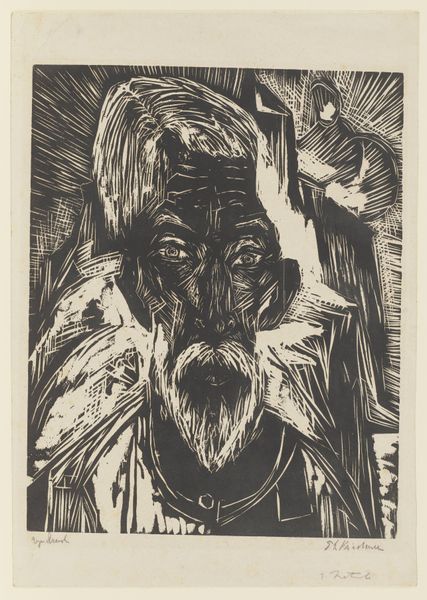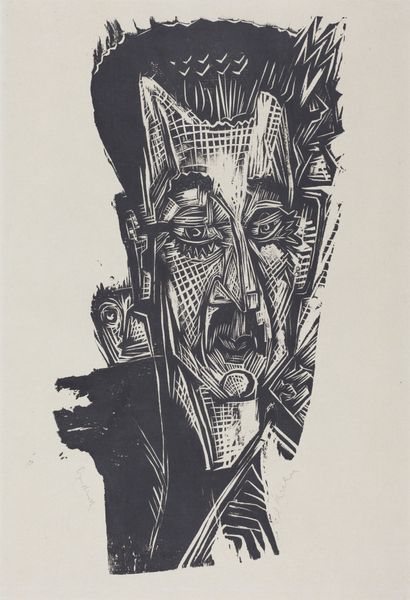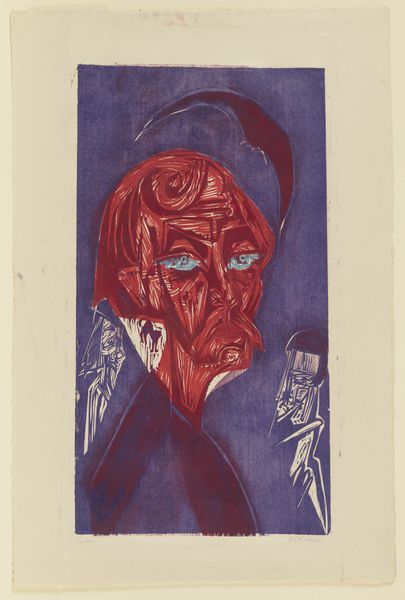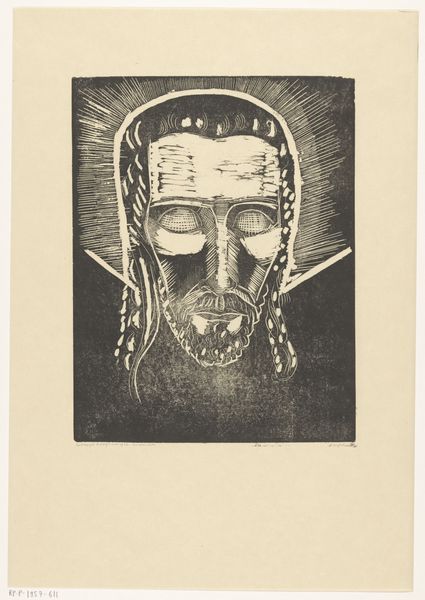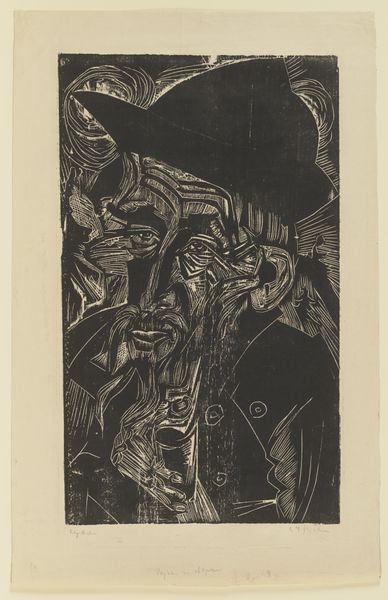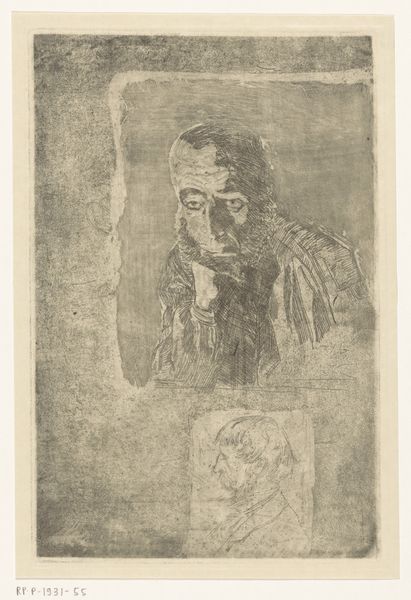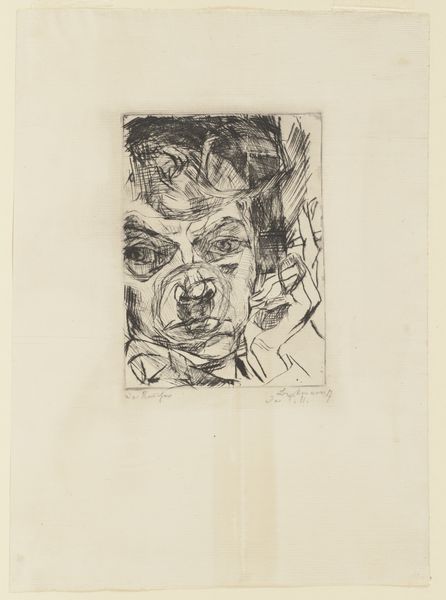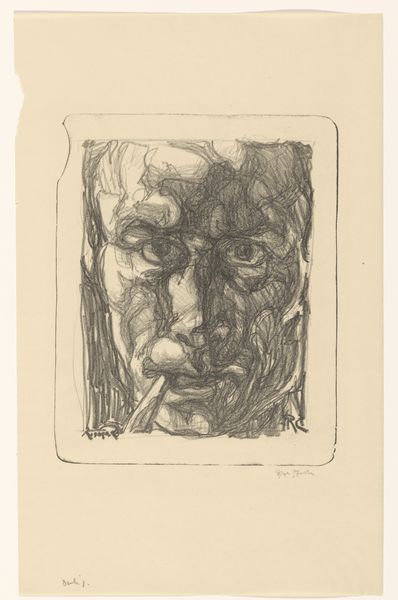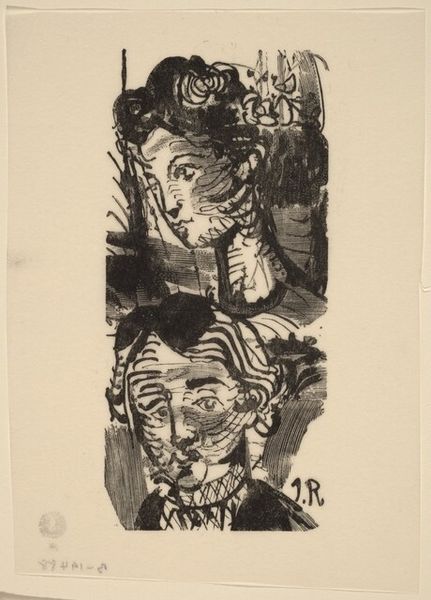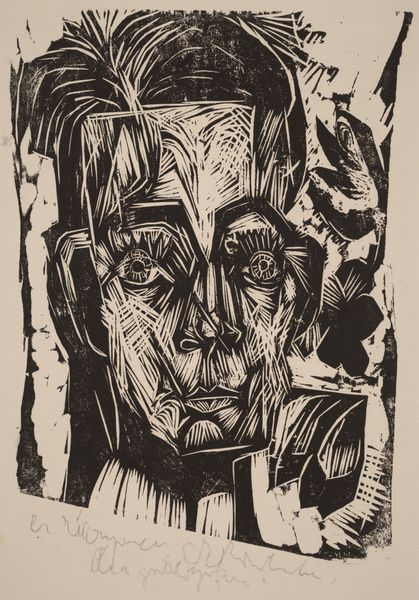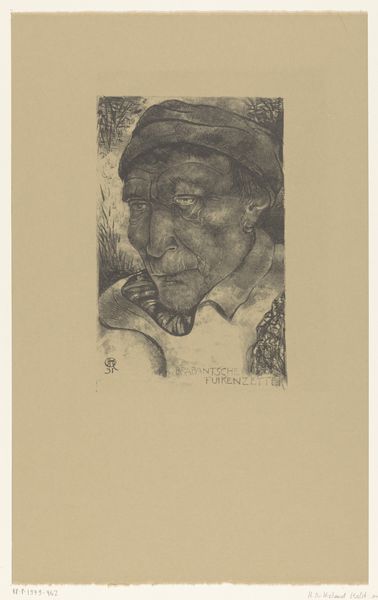
drawing, print, woodcut
#
portrait
#
drawing
# print
#
german-expressionism
#
figuration
#
expressionism
#
woodcut
Copyright: Public Domain
Curator: This is Ernst Ludwig Kirchner's "Head of a Sick Man (Self-Portrait)," a woodcut he created in 1918. Editor: Stark, isn't it? The dramatic contrast between black and white lends a powerful sense of unease and anxiety to the subject's face. You can almost feel his suffering just by looking at it. Curator: The roughness inherent in the woodcut technique itself reinforces that emotional impact. Note how Kirchner deliberately leaves visible traces of the carving process. Each line, each gouge, amplifies the sitter's obvious distress. Editor: Right, this isn’t just a portrait; it is a document reflecting post-World War One angst within German Expressionism. It feels like a physical manifestation of inner turmoil and the decline felt in post-war German society. His hand gestures amplify his narrative. Curator: Semiotically, his hands point in different directions, leading the eyes on divergent pathways across the work’s topography. We have this disjointed feeling which speaks to a deeper level of fragmentation. Consider also the deliberate flattening of perspective. Editor: That flattening further enhances the emotional intensity. It forces us into an uncomfortable proximity with the subject. And that oversized scarf… I read it almost as a symbolic restraint, further boxing him into his distress. Do you see parallels in German societal constraints during this period? Curator: Precisely. Art rarely exists in a vacuum, as the institutions of the day profoundly shape artistic creation and its interpretation. We read the influence of German Expressionism. It really captures its societal commentary here through angular forms and distorted features to convey raw emotion. Editor: Knowing Kirchner volunteered for military service, only to be discharged due to mental and physical breakdown, adds another layer. Is this portrait perhaps about grappling with trauma and loss of self? Curator: Absolutely. Art allows us to analyze a moment’s psychological landscape. That is why his rendering becomes such an important document of his, and by extension, our society's struggles with the war. Editor: Thinking about art and the effects war can have on humanity, perhaps in this portrait, Kirchner leaves a challenge to the society to seek a brighter future. It certainly is not all darkness on this expressive composition! Curator: Ultimately, the impact hinges on this brilliant synthesis of technique, composition, and subject.
Comments
stadelmuseum about 2 years ago
⋮
This intense self-portrait of Kirchner shows him in a severely emaciated state. The depiction of his hands – temporarily paralyzed as a result of medication abuse – has a symbolic quality. In 1915, just months after entering military service, the artist had suffered a mental and physical breakdown. There followed a series of stays in sanatoria, of which the last was in Kreuzlingen on Lake Constance. The sensitive, contrary strokes defining the face and hands translate Kirchner’s psychological tension into the woodcut medium in striking manner.
Join the conversation
Join millions of artists and users on Artera today and experience the ultimate creative platform.
